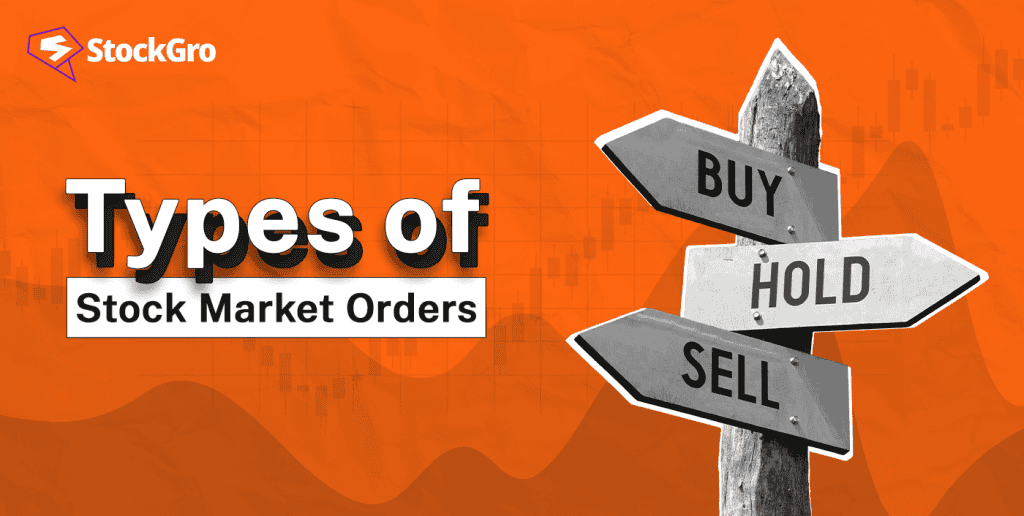
In stock trading, how you execute a transaction can shape its outcome. Different orders allow you to manage everything from timing to risk exposure. Some focus on quick action, others on securing specific prices, while certain methods aim to protect your investments from sharp market swings.
To make informed decisions, it’s crucial to know the most common options available. Let’s explore the variety of stock market orders and their benefits.
What are stock market orders?
In the simplest terms, an order is a command an investor gives to their broker or trading platform, directing how they want to acquire or dispose of securities. The details of this instruction, including the quantity and preferred price, shape the transaction’s conditions. Choosing the right type is crucial, as it determines both the success and cost of the trade..
Now, let’s dissect the essential elements:
- Type: The way in which a transaction is carried out depends on the type of directive.
- Volume: This refers to the number of units you’re seeking to trade, whether it’s 150 shares or 15K. This quantity must be specified as part of the instruction.
- Price level: If you’ve opted for a limit order, you can define the exact rate at which you’re willing to transact. For instance, if you only wish to buy XYZ Ltd shares at ₹750, the deal will only occur if the price hits that or lower. With immediate execution orders, however, transactions occur at the best available price.
Once these details are finalised, the request goes to the stock exchange, where it looks for a counterpart. It could be another investor offering to sell at the rate you specified or, in the case of immediate execution, at the current price in the market. Once matched, the transaction is completed.
Overview of the main stock market order types
Selecting the appropriate market directive isn’t merely a technical step. It’s a tactical decision. The approach you take can greatly influence both the price and the likelihood of your trade being fulfilled.
The most commonly used stock market order types include:
Market orders
A market order allows you to act instantly, requesting your broker to buy or sell a stock without delay, at the best available value. This order type prioritises execution speed over price accuracy, making it essential when time-sensitive decisions are critical. In essence, you’re choosing immediacy, accepting the current price offered by the market, even if it shifts slightly during the transaction.
Core features of market orders:
- Rapid fulfilment: Your request is processed as soon as there is a match for your order. This is an option to consider when you don’t want to miss out on a trading opportunity.
- Uncertain final rate: The final amount may vary, as prices can change quickly between the moment you place the request and the time it’s completed.
- Quantity first: You specify how many units you want to buy or sell, but the system selects the prevailing rate available at the time.
For instance, placing a market request for 400 units of AAA Ltd, currently valued at ₹950 each. While the order is being fulfilled, that rate might edge up to ₹960 or slip to ₹945, depending on market conditions. The trade is guaranteed, but the price will fluctuate with the market.
When is a market order useful?
- In fast-paced markets: When immediate action is more important than precision, such as during a sudden price spike or drop.
- With liquid assets: Best suited for highly traded stocks where prices remain relatively stable.
- When time outweighs price: If securing a position quickly is your goal, this approach ensures you don’t miss the chance, even if the final price varies slightly.
To know more: Exploring the world of trading: The market order
Limit orders
It allows you to set the exact price at which you’re prepared to buy or sell stocks, providing greater control over the transaction. Unlike a market order, which is focused on immediate action, this approach ensures that the trade only happens when the specified price is met. You set the conditions, and the system waits for the market to align with your terms.
When placing a limit order, you decide both the rate and the quantity of shares. The instruction remains pending until the stock reaches your designated level.
Say if you’re looking to acquire 300 shares of a stock currently priced at ₹2.5K but only want to pay ₹2,450, the transaction will only occur when the price dips to ₹2,450 or below. Likewise, if you’re selling, the trade won’t activate unless the stock reaches the value you’ve chosen or higher.
Key aspects to consider:
- Possibility of no transaction: If the market doesn’t reach your set price, the order may never get completed, and you may miss out.
- Partial fill risk: Sometimes, your target price is reached briefly, leading to only part of your order being processed before the market shifts again.
- Time sensitivity: These instructions may have a time limit, expiring at the end of the day, or they can remain active until manually cancelled, depending on how you set it up.
A limit order is ideal when controlling the price is more important than immediate execution. This method works well in volatile conditions, ensuring you don’t overpay or undersell. It’s a useful tool for investors who prioritise precision and are willing to wait for the market to meet their terms.
You may also like: What Is a Limit Order in Trading, and How Does It Work?
Stop orders
A stop order allows you to predefine a price at which an automatic trade is triggered when the market reaches that threshold. Once the specified price is hit, the stop order becomes active and converts into a market transaction, executed at the current rate.
This mechanism is commonly employed for managing risk, either by limiting potential losses or securing gains when the market moves unexpectedly.
Different types of stop orders:
- Stop-loss: This order type helps shield investors from significant declines. Imagine you hold shares at ₹2000 and want to sell if they fall to ₹1900. The moment the stock drops to ₹1900, the stop-loss instruction kicks in, converting into a sell request at the best possible rate.
- Buy stop: Used to catch rising trends, this order is triggered when a stock’s value moves above a certain level. For instance, if a stock is trading at ₹1200, but you believe it could surge further, you might place a buy stop at ₹1,250 to automatically enter the market if it hits that point.
Important considerations:
- Fluctuating prices: After the stop level is met, the final transaction price might not align perfectly with the stop price, due to market dynamics.
- Hands-free mechanism: Once set, there’s no need for constant monitoring—when the market hits your predefined price, the system takes over.
Stop orders are highly useful when you want to ensure a trade is executed without actively watching the markets. Whether it’s mitigating potential losses or capitalising on upward movement, these orders give investors a strategic advantage by automating decisions, allowing for proactive and efficient market management.
Stop-loss orders
As noted earlier, a stop-loss order helps safeguard your investment by automatically selling a security once its price drops to a predetermined level. When prices start to slip beyond your comfort zone, the stop-loss order ensures you’re taken out of the position.
- Market-triggered stop-loss: Once the stock reaches your predefined price, it converts into a market transaction, selling at the available price. This method ensures the sale but may result in slight price variations.
- Limit-based stop-loss: Here, the order switches to a limit order after the trigger point is hit, making sure the sale only happens at your specified price or better. While this offers greater control, it risks not being executed if the market drops too quickly.
These orders are best used when you’re looking to limit risk in uncertain or volatile conditions. They allow you to step away from constant monitoring while providing a safeguard if the market turns against you. By automating the exit, you avoid larger declines and protect your capital in unpredictable trading environments.
Other types of orders
- Cover order: This involves placing two linked orders—a regular buy/sell coupled with a stop-loss to limit potential losses. Once the initial trade is completed, the stop-loss is activated to manage downside risk.
- After-market order: Used by traders who can’t participate during normal trading hours, this lets you place your orders once the market is closed. These will be executed when the market opens the next day.
- Good-till-cancelled order: This type of instruction remains valid until it is either fulfilled or manually cancelled, no matter how long that takes. It’s useful for setting long-term price goals.
- Immediate or cancel order: Here, the trade is processed immediately or not at all. Any part of the order that can’t be completed on the spot is automatically cancelled.
- Bracket order: This combines multiple orders into one—an entry trade, a profit-taking limit, and a stop-loss. Once the initial trade is activated, the remaining conditions are put in place to automate exit and risk control.
You may also like: What is a GTT order? How is this tool beneficial for investors?
Bottomline
Understanding the variety of available orders in stock trading equips you to approach the market with more precision. Each method serves a unique purpose, whether you’re aiming to minimise losses, secure gains, or optimise your timing. By tailoring your approach, you can better align your actions with your overall financial strategy.
FAQs
- What are the four main types of orders?
There are 4 common ways to place trades. A market order buys or sells right away at the available rate. A limit order allows you to choose a specific rate for the transaction. A stop order is triggered once a certain threshold is hit. Lastly, a stop-limit approach combines the stop feature with a price limit, ensuring the transaction happens within a specified range after the threshold is met.
- What are the 4 types of stock market?
There are four common categories of stock exchanges. The primary market is where companies initially offer their securities to the public. The secondary market handles buying and selling of previously issued securities. In the over-the-counter space, trades happen directly between parties without a central exchange. Lastly, the equity market focuses on transactions involving company ownership stakes. Each of these platforms serves a unique role in the overall financial system.
- What is the best order type for stocks?
Different instructions can be used depending on your goals. A market order aims for immediate execution at the current rate. A limit instruction lets you set a specific rate, and the transaction only occurs when that target is hit. A stop-loss setup automatically triggers a sale if the stock drops to a defined threshold. Finally, a stop-limit directive combines elements of both stop-loss and limit approaches, providing more control when specific conditions align. Each serves a unique purpose.
- Which is better, AMO or GTT?
AMO and GTT are useful in different situations. After Market Orders (AMO) allow you to set trades outside regular trading hours. These are processed when the market starts the next day. Good Till Triggered (GTT), on the other hand, stays active until your specified price is met, regardless of time. It doesn’t expire daily. Your choice depends on whether you need flexibility with timing or want to set a price and wait until it’s met.
- What are orders in the stock market?
Orders are requests sent to brokers to carry out specific buying or selling actions. These directives outline the conditions, such as timing and price, for how transactions should occur. Some focus on immediate fulfilment, while others wait for certain criteria to be met. Investors use them to manage entry or exit points, shaping their approach to risk and reward.

